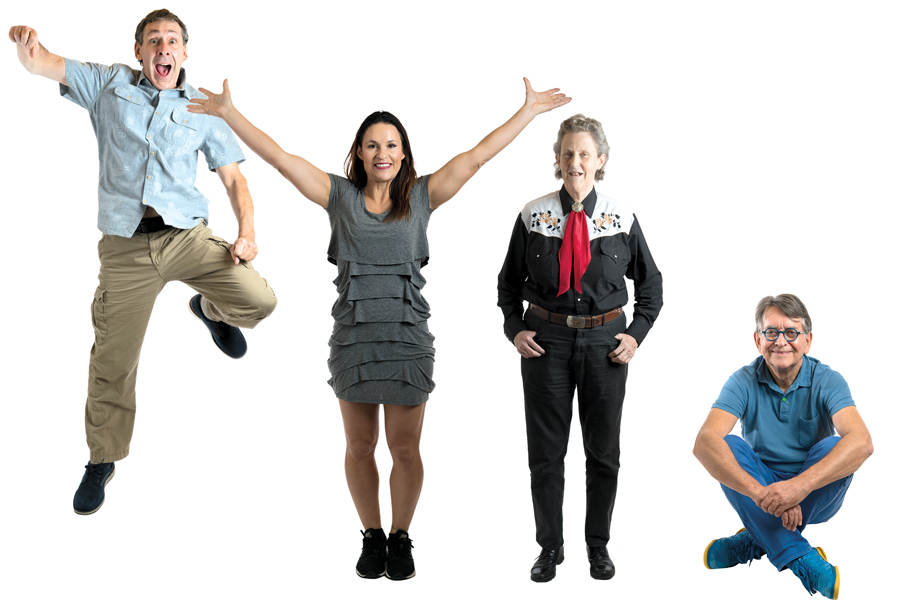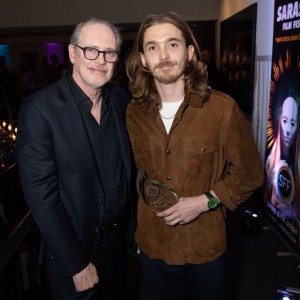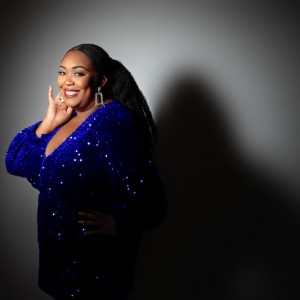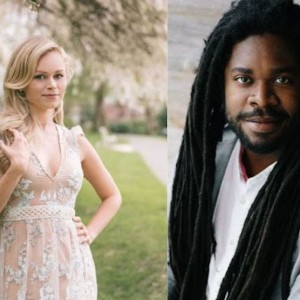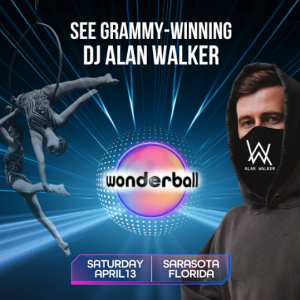What do an artographer, an ethnobiologist, a social media expert, a Harvard professor and the founder of a submersible company have in common? All were speakers alongside nature photographers, architects, designers and neuroscientists at this year’s PINC Sarasota—a one-day conference housed in the Sarasota Opera House exploring all the fascinating ways in which people strike their own paths and make their marks upon the world. For those who couldn’t make it out this time, here’s a taste to tide you over until the next conference.
David LaPorte, Clinical Psychologist
What’s the difference between fear and paranoia? Fear is a normal emotional reaction in response to something that could harm us. Paranoia is a pathological condition, and the dimension that paranoia has is suspiciousness. Suspiciousness is also a normal emotion that we experience degrees of—paranoia is suspiciousness turned up to the red zone. The best analogy would be that sadness and suspicion are normal but depression and paranoia are pathological conditions. I believe that it is on the rise. The trouble is that it’s really hard to get data on this because paranoid individuals don’t believe that they have a problem. We don’t know how many people are out there like this, but there are indirect indications to show that this is getting worse. When you ask people how much they trust other people, you find that from 1960 to now our level of trust in important things like other people and institutions has just plummeted. It has some major implications. If we don’t trust the government then we’re not going to take global warming seriously, we’re not going to vaccinate our children, we’re not going to eradicate Zika. If we don’t trust other human beings, the foundation of our relationships is going to be eroded away. Our current environment is really toxic in this regard because it undermines our sense of trust. The government is spying on us, computer hackers everywhere—there are lots of things that signal to us that the world is not a safe place, that we have to be careful and can’t trust people. It’s going to be tough.
Clo Willaerts, Social Media and Internet Marketing Expert
Is social media still the big game changer in the digital world? 2013 was a magical time. People were fascinated by and there was a lot of attention on social media. People understood that it was changing something, they just didn’t realize what—the end of being anonymous online. Right now I see a similar shift. It’s all about the same big companies—Google, Apple, Facebook, Amazon—and they’re experimenting with artificial intelligence. Sometimes they talk about artificial intelligence as if we’re talking about algorithms. They call them robots. They say the robots are coming. The robots are going to take our jobs, going to take away our women and start a robot war. It’s true that something is changing, just like social media changed the whole concept of online identity and privacy. Before social media, you weren’t forced to bring together your real world identity and your online identity. Artificial intelligence is changing something else and I don’t know what it is yet. My point is we need to find a different language to talk about this change because the language we’re using right now is from science fiction movies and robots have a bad reputation.
Temple Grandin, Professor of Animal Science
What is visual thinking and how does that fit into the education system? The world needs different kinds of thinkers. I’m getting concerned that visual thinkers like me are getting screened out of the educational system because we can’t do algebra, for example. Jane Goodall had a two-year secretarial degree when she did her famous study. Steven Spielberg had Cs and got rejected from a top film school, was dyslexic and bullied in school. Thomas Edison was a hyperactive high school dropout labeled “addled” by his teachers. What would happen to him today? What helped them be successful? Learning how to work at an early age and early exposure to clear relevant activities. I was exposed to beef cattle when I was 15. You have to be exposed to stuff to get interested in it. In some states, they’ve taken out all the hands-on classes—art, sewing, woodworking, metalworking, automobile shop, theater, music—and kids aren’t being exposed to enough to figure out what they might want to do for a career. We have a huge shortage in skilled trades. I’ve worked with some brilliant guys and what saved them was the high school welding class. Taking these things out of school is terrible.
Michael Rojkind, Architect
What does it mean to design responsibly? We do projects that I call “added value projects,” where we question the program of the client. We reprogram their program. Because the client might want to do a specific thing but it might be more of his interest than the interest of everybody. So we try to balance that. That amount of effort, that money, that moment in time has a broader outcome, and even if it’s paid for by one client, it really reaches more people. If we had more buildings that cared about where they were placed, we would have much better cities. I bring psychologists, sociologists, landscape designers, financial guides and sometimes even lawyers because it’s important for the client to understand that it’s not an egoistic thing about the architect pushing a building but understanding what the city needs. If we understand that we’re all responsible for things that happen in the cities, then we will have better outcomes. I don’t see myself as a designer who only cares about the building. I’m a designer who cares about the strategy and those tactical and experiential innovations—how can I make things more aligned with a little of what everybody needs? I’m quoting my friend here: “There’s nothing worse than answering correctly the wrong question.”
Fuller, Cartographer
As nontraditional maps, what is it you try to capture in your work? My maps tend to work very emotively. They’re not traditional cartographical items and I tend to break most cartographical rules. For example: I don’t use text, I use symbols. That allows me to engage with viewers on an emotional level. And we all connect with people or places mostly through emotion and that’s what builds up the personality of the place, the emotional relationship. The pattern, the flow, the topography of the place can all be expressed pictorially rather than using contour lines, which have a much more scientific feel. Because all creators of maps or cartographical items are the director of the message of the work, and because ultimately my maps are art, there is a huge expression of how I felt about this place. It’s kind of 50/50. There’s a lot of storytelling in my work. But there’s an underlying factual narrative to a lot of fiction and it’s the fictional side of a story that we all imagine. We all actually experience places in a very similar way. It’s then down to the individual to decide what those drawings mean. Anything can be mapped—it’s mapping thoughts and emotions. So even sitting in a dustbin, you could map that if you had to.
Marko Costanzo, Foley Artist
How does sound evoke emotion without words? Sound evokes emotion because it brings you either more into a scene or it takes you to a place that the director wants to bring you. If someone’s coming toward you in a ferocious manner, it’s a lot different than if they were drunk. The innuendo of sound comes through. It will write some of the story. You’re looking at the emotion of what the actor is doing and miming what they’re doing, being conscious of what they should sound like. Most of the time, I don’t have the props or anything reasonably close to it, but sound is sound. If it’s a heavy glass, you know you want a sound that represents that heavy glass. Do you use a glass? Possibly. Do you use the glass that’s onscreen? Probably not, because you’re not going to have it. But I do have fluted glasses, champagne glasses, shot glasses—every one makes a distinct different sound. And depending on how you put it down—how much energy you use to put something down—is where the craft lies. You want to embellish the things you see onscreen and make them not sound like something you buy out of a sound library. We want to make that exact sound for that exact moment and never repeat it again. Every character has their own movement, every character has their own feeling for things and I’m interpreting that.
Iain Little, Founder, Full Grown
Why grow a chair? Building a chair using traditional techniques is incredibly inefficient and takes an incredibly long period of time. It takes 40 years to grow a hardwood tree that you then cut up into little bits of wood. You then cut them up into further little bits of wood. Then you make the exact bit of wood that you need for your chair. You stick bits of steel and aluminum in it and then you make your chair and that has used up huge amounts of energy and lots of labor. Whereas our chairs grow from the ground and take about five years for willow and 15–20 years for oak. You don’t waste anything; you don’t throw any bits away. Everything that you create or grow is grown by nature and can be used then by man. We have to use our imagination a bit because this is a very new movement—it’s only 10 years old. The potential is obviously enormous—the world furniture market is a $500-billion-a-year market and there’s lots of use for furniture in places that at present don’t buy furniture, such as developing countries, where people can grow their own chairs and use them themselves or sell them for vastly overinflated prices back to rich people living in America and Europe.
Diana Beltran Herrera, Artist and Designer
How can art affect our relationship with nature? It started with something very simple—why do we have birds in cages in houses? That’s part of my culture. Everyone has birds. When I was a girl, I used to like that, but at some point when I grew up I started feeling that things weren’t right and that’s not the way these animals should be treated. This project is a personal project because I’m always trying to find a way of relating with things that don’t cause any damage. I always felt very curious about nature and I always wondered how I can communicate and relate in such a way that I don’t have to affect anything. Through recreating these things, making replicas and models of things that I was really curious about, I start learning. It took me back to my childhood, when I learned about the world from toys and objects. I felt that relationship was a healthy relationship because I could meet as many things as I wanted, learning about those things. It’s an interesting way of getting to know something.
David Bittner, Biologist and Nature Photographer
What has your study of bears taught you about people? There are so many similarities and parallels between bears and humans. Bears are like humans or humans are like bears—you can put it whatever way you prefer. Normally you should not anthropomorphize animals too much and give them names, but in my point of view it’s showing respect towards a specific individual animal that is different compared to all the others and that deserves a name. I don’t give them a number, I give them a name. The most striking thing is that the bears have such strong characters, as we humans have. If you take your time and get to know different individuals and see how they function in the hierarchical and socially organized structure, it’s fascinating. All these character types that we know from humans you can also see them in the bear’s world. They have moods and personality. There you can learn a lot from the bear’s world. Sometimes positive, sometimes negative.
Giovanni Frazzetto, Writer and Neuroscientist
What is the true importance of intimacy? To be intimate with someone is to know that you can rely on them, that you can trust them and they will accept you for who you are. That takes time. Intimacy is a habit that we rehearse every day and this never stops. That’s the beauty of it. And friends can be intimate without sharing a bed. You can rely on them. Isolation is not good for us. We can be strong on our own, but togetherness makes us stronger. There are lots of things that isolation does to us. Studies show that even life expectancy can be reduced if you suffer loneliness—even perceived loneliness. It’s not good for your immune system. It’s not good for your blood pressure. I’m not saying that people who live alone or who are single are in trouble—it doesn’t have to be a partner as long as you’re connected to friends. As long as you feel connected to a community, you’ll do well. One of the very difficult aspects is that when you’ve experienced it, you start to perceive the world as lonely. You filter through it and you think that things are going to get worse and worse. So it’s important to stay connected and together with your community.
Jen Welter, NFL Coach
Was there significant pushback at the idea of a woman coach in the NFL? Externally, there was a lot of skepticism—is this a publicity stunt? Why do we need this? There’s always friction when it comes to change. But internally not at all. The guys were so amazing and very welcoming. We were more alike in our love of football than we were different in terms of gender. It’s not that I had this grand vision that I was going to break the glass ceiling—that never happened. It took people seeing something in me before I even saw it in myself. The first time I was offered a job to coach, I said no. It was a gut-check reaction. I had never thought of coaching. I had never seen myself in that role. But while I had never envisioned it, I was willing to step up to the challenge. You have to approach every situation at first listening and seeing what somebody needs, and then working to help them push past or fill that need to find that goal. You have to be willing to listen and to notice and to ask in order to be able to help. The biggest mistake that someone makes going into a new role is assuming you know the answer before you know the question. That’s the differentiator.
Frederik van Oudenhoven, Ethnobiologist
What do you learn about a person by cooking with them? When you think about culture and knowledge, the way we learn about these things is by people telling us about it, by showing us grand things. In cooking together with people—usually farmers, mothers, schoolteachers, not people with big egos and voices—you look at their hands and they reveal a knowledge that is very hard to express in words. There’s a lot of knowledge in hands, in the way people do things. Food is a language that many people speak—almost everybody speaks it. When I started working as a scientist, I would ask people questions—what is this agriculture? What is this seed?—and they answer in a certain way, but I’m always the one asking and they’re always the ones being asked. When you make food, the people there—the farmers, the mothers, the children—they become your teachers. It’s so much a part of their bodies, of who they are every day, that there’s a sense of them being the teacher and I become the student. They teach about the connections between food, their religion, their celebrations. And what enables them to talk about it is food.
Nigel Holmes, Explanation Designer
What drew you to a career in explanation design? Data visualization and big data is a hot topic at the moment and it’s very abstract. It’s largely done by scientists and academics that have the tools now to make incredible visualizations of huge data sets. Explanation graphics was a way of saying that I’m going to take difficult concepts and make them visible in some way. If there is a picture in the graphic, it draws people in immediately. Something abstract is OK if you know what the subject is and you know what you’re looking for. But if you don’t know what you’re looking for and you just see a whole load of numbers and graph lines you might not take it on. It looks dense and boring. I’m trying to engage people. I draw in a very simple way. It’s more like a little vocabulary of shapes. I have to deliver the information—otherwise I’ve wasted their time—but I like to use a little bit of fun and humor and engage the reader. If you can make people smile, you’re halfway to getting them to understand. I don’t mean funny “haha” humor, I mean good humor—it makes you feel good, feel empathy and you want to read on. There are lots of subjects in design that aren’t funny at all, but that doesn’t mean you can’t be nice to people and be friendly to the reader. The best graphics are a perfect marriage of words and pictures.
David Edwards, Creator, Writer, Harvard University Professor
How will education need to adapt for the modern age? We don’t teach science the way science is practiced, particularly at the frontier of experience and knowledge. Fundamentally we don’t know how research is done, but research at frontiers is guided as much by deduction and analysis as it is by induction, intuition and comfort with ambiguity. Art and science absolutely merge. We need to introduce making, to associate learning and doing in a way that we haven’t in a very long time. There is a lot of neural and psychological benefit to manipulating and making. Also, if you think about what I’m trying to teach a student today, it’s so different than what I might have taught 30 or 40 or 300 years ago, where I teach you to be a lawyer or whatever and I know what that is and you don’t. Today, I need a student to discover what it will be to be a teacher in 2030. I don’t know and she doesn’t know. He or she will have to really pay attention in 2030 because it will be a very different time. We’re training students for a jobless future, which isn’t to say that they won’t have a job, but they’ve got to discover it. You don’t do that by thinking about it—you actually make the future by creating it today. The future has never existed; it’s made now. They learn while they create.
Filip Jonker, Founder Ortega Submersibles
What drives you to push the possible? I get fascinated by something, so deeply and so completely focused on something that I want to know everything about it and what you can do with it and what the limitations are and then I want to stretch those limitations. I really don’t like limitations. If somebody says it’s not possible, then I will prove you wrong. I just want to find out what’s possible. When I was young and reading a comic book or an adventure novel, I could see myself doing these things as well. I never saw a limitation. You just have to organize, find a way and create the circumstances around you so that you can do what you like. So when you read about Tin Tin and his submarine, you can go do it. The sea and the water is a complete mystery to most of us, but I think we’re closer to fishes than monkeys in a way. It fascinates me that we, on this planet, know every inch on the surface, but when it goes below the surface we don’t know anything. Only 20 percent of all the oceans are mapped. We all seem just to be on the surface in a big tanker or cruise ship but never under it. It’s scary, of course—the monsters, the extreme pressure. It’s more dangerous, what James Cameron did with his deep-sea mission, and more difficult than getting a rocket ship to the moon. Space is relatively easy with zero pressure.





